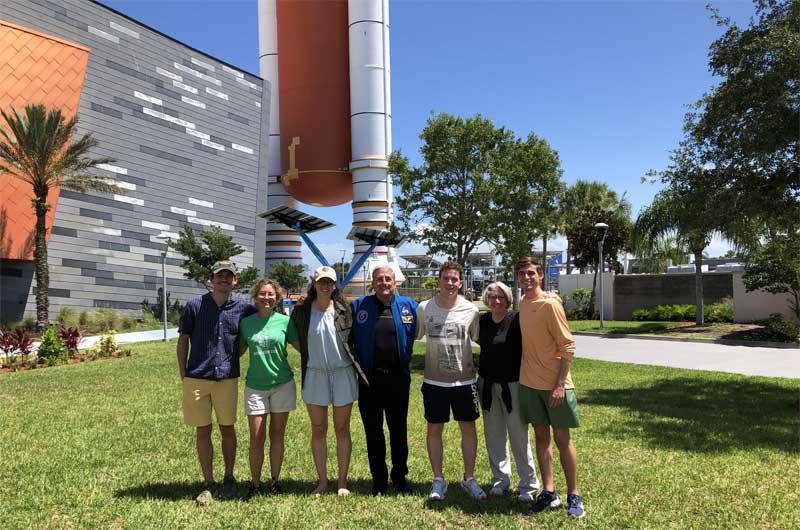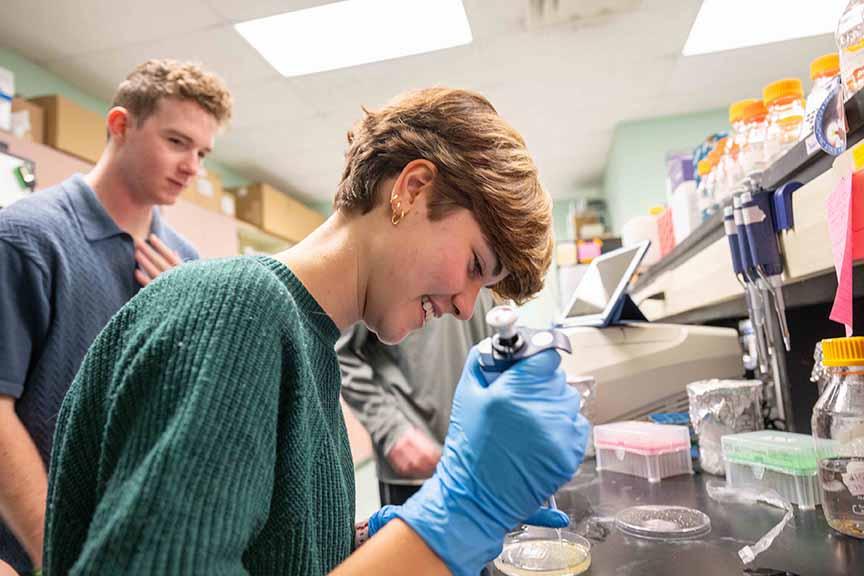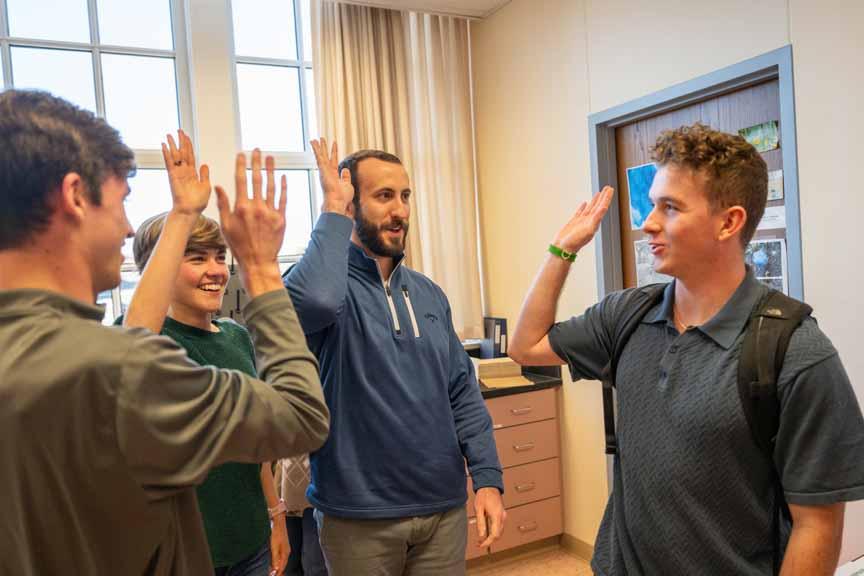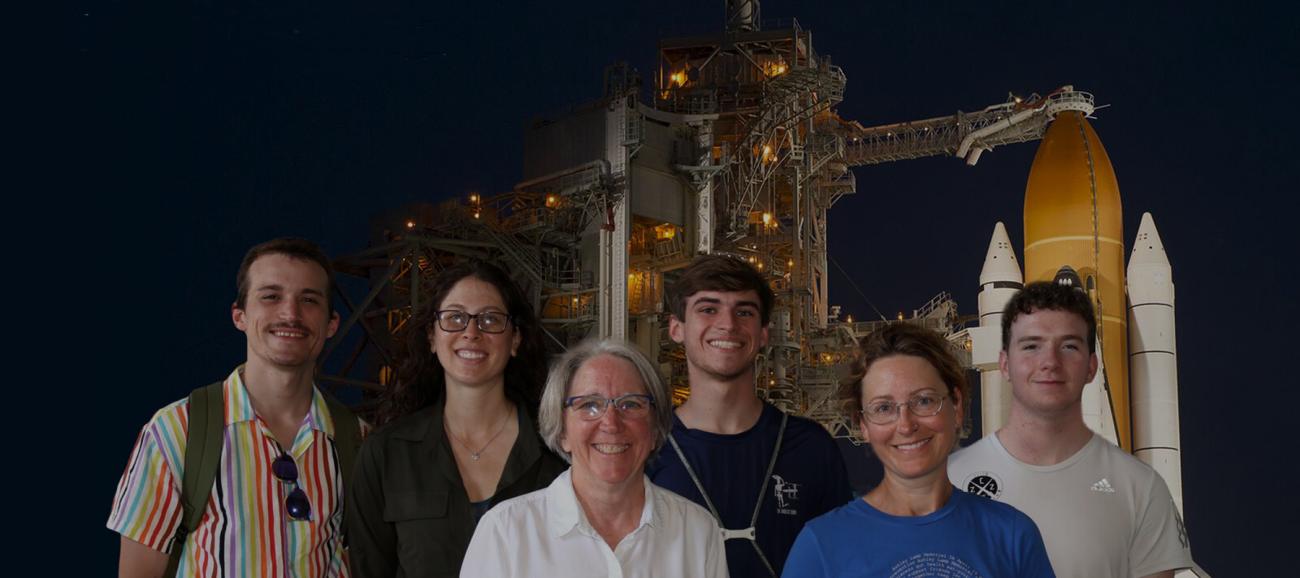
Help Design the Next Experiment on the International Space Station
Research projects designed by Ohio University students compete to travel to the International Space Station (ISS) and back as part of the Student Spaceflight Experiments Program.
If you're interested in space, join OHIO's Student Spaceflight Experiment this fall.
Dr. Sarah Wyatt invites students from all majors — English to engineering, art to astrophysics and more — to join OHIO's team in the Student Spaceflight Experiments Program's Mission 19 to the ISS. "You don't need any experience to become part of this," Wyatt emphasized.
For more information on how to participate, contact Sarah Wyatt at wyatts@ohio.edu .
Students can get 2 credits for the time they spend learning about how to design something small enough to send to space. Register for PBIO 2900 Special Topics – Student Spaceflight Experimenttaught by Wyatt in the fall semester. (Note: It is not necessary to take the course to participate.
Sign up for the Next Mission
Check Out the Course PBIO 2900 Listing
About OHIO's Missions
- We're recruiting for Mission 21in Fall 2025!
- The Mission 19group presented their proposals and Team 7’s project, Effect of Microgravity on Growth of Lemna minor: a Promising Space Food, was selected to fly next. Undergraduate students Lara Fogwell and Cat Gavin, graduate student Remington Burwell, and Jake Magula '24 plant to attend the Student Spaceflight Experiment Program national conference at Kennedy Space Center in July of 2025.
- Mission 18has rocketed to the International Space Station and back, and the student researchers are working on their sample material. Undergraduate student Nathan Smith presented on their work at Ohio University's Student Expo and at the American Society of Plant Biologists' Southern Section in Raleigh, NC. More about Mission 18 .
-
Students' Experiment Rockets to International Space Station“We watched the launch from the Banana Creek viewing area at the Kennedy Space Center Visitor Complex,” said OHIO student Nathan Smith.
-
From Athens to the ISSMichael Lane, a third-year biological sciences major from Hamilton, Ohio, was looking for research opportunities. “When I learned about this, I was like, ‘Space?! Of course I want to do that,’” he recalls.
-
OHIO Research Project Selected for International Space StationA research project designed by a group of Ohio University students will soon be traveling to the International Space Station (ISS) as part of the Student Spaceflight Experiment Program’s Mission 18 to the ISS.
-
Sarah Wyatt among 18 Scientists Leading Nation's Research AgendaDr. Sarah Wyatt is one of 18 U.S. scientists who led the formulation of the nation's ambitious 10-year research roadmap to support humans traveling to the moon and Mars.

Students' Mission 18 Experiment Returns from International Space Station
During the fall semester, OHIO students from across the University had the opportunity to design projects and write proposals for the Student Spaceflight Experiment Program’s Mission 18 to the ISS.
Under the leadership of Dr. Sarah Wyatt , professor of environmental and plant biology in the College of Arts and Sciences, over 34 undergraduates worked in teams with graduate students serving as facilitators throughout the fall semester preparing projects to be judged for the National Center for Earth and Space Science Education (NCESSE) program.
The winning team consisted of Michael Lane, Nathan Smith and Victoria Swiler, with facilitator Nick Whitticar. Their project focused on whether the bacteria Sphingomonas sanguinis would promote resilience to microgravity in the model plant Arabidopsis thaliana .


ABOUT THE PROJECT: The Student Spaceflight Experiments Program (SSEP) is a program of the National Center for Earth and Space Science Education (NCESSE) in the U.S. and the Arthur C. Clarke Institute for Space Education internationally. It is enabled through a strategic partnership with Nanoracks, LLC, which is working with NASA under a Space Act Agreement as part of the utilization of the International Space Station as a National Laboratory. Dr. Sarah Wyatt directs the program at Ohio University.

